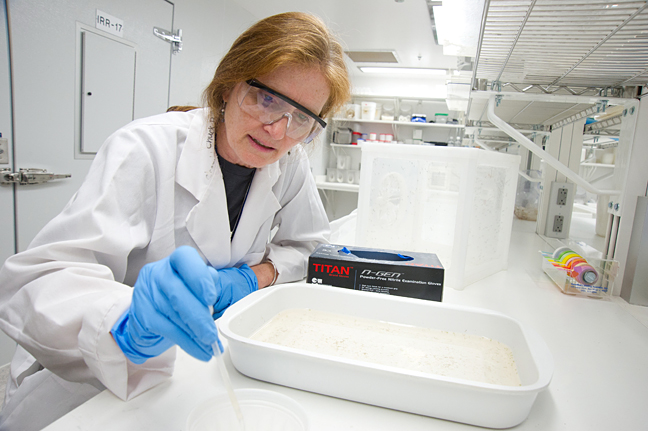You are here
A Visit to CDC's Insectary
 In a white-walled wing of the CDC campus in Atlanta is a semi-tropical area filled with mosquitoes – CDC’s insectary. I went there to meet some of the entomologists working there, and the research they are doing is fascinating. In 2010, malaria killed about 650,000 children in Africa, so their work has an impact far beyond these humid lab rooms in Atlanta.
In a white-walled wing of the CDC campus in Atlanta is a semi-tropical area filled with mosquitoes – CDC’s insectary. I went there to meet some of the entomologists working there, and the research they are doing is fascinating. In 2010, malaria killed about 650,000 children in Africa, so their work has an impact far beyond these humid lab rooms in Atlanta.
Through these labs, CDC entomologists study the efficacy of insecticides on mosquitoes, seeking constantly for signs of resistance, and test new types of insecticides that can be used, for instance, to treat bed nets. In other rooms, CDC scientists study mosquito behavior. They cut small holes in bed nets to simulate the minor damage a bed net might sustain through normal use and study how mosquitoes most frequently take advantage of those holes to get inside. People who are making decisions about the best strategies to fight malaria – governments, health experts, NGOs, manufacturers – rely on the results of CDC’s work. While much study still needs to be done, this research provides valuable information about the best insecticides to use on walls in homes or on bed nets, the best materials from which to design bed nets so that they remain effective as long as possible and how to avoid contributing to the problem of insecticide-resistance. Incredibly, people in some parts of Africa sleeping without a bed net can be exposed to as many as five bites each night from malaria-infected mosquitoes – making the work going on here at CDC particularly critical to global health.
Beyond just these rooms, a grant from the National Institutes of Health to the CDC Foundation helps CDC supply living and preserved mosquitoes to malaria researchers around the world. By contributing to the broader body of research on mosquito habits and behaviors, CDC is advancing the global fight against malaria and saving lives. For me, it was yet another fascinating day on the grounds of CDC.
